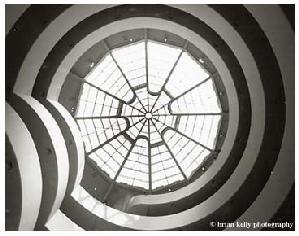

Mr. Beckman
Spring 2008, Friday 2:45-4:45
![]()
This is a new version of Art 150, which used to be "Intermediate Black and White Photography." This version will be an intermediate or advanced course in photography, as such, meaning that the emphasis will be on camera work and image-making in the field or studio. Consequently, the student may use either film or digital media. Dark room resources for black and white film processing are available. Computer and printing resources are available for digital photographers. Our critique sessions will aim at all issues of image creation regardless of processing used. My preference is to produce black and white images primarily, though some students may wish to incorporate color features in either black and white chemical-prints or digital prints. (Image at the right is by Brian Kelly.)
Personal Information
Mr. Beckman's office is Rm 1270 in Parson's Hall. It is best to contact him by e-mail at Tad_Beckman@hmc.edu
The former physics darkroom (Keck SB32) will be available for those students who wish to do chemical processing of black and white films. We have a quality Epson printer available for students who wish to print from digital files; however, these students should plan to do their digital processing on their own computers or in the computer labs. IMPORTANT: Please read the rules®ulations for darkroom use. Also, please read the policy statement for this course.
Assignments
We will begin the semester with two weeks devoted to perfecting exposure control and two weeks devoted to composition. We will then adopt a class project which will guide us in camera work for the next two weeks. During this time, students will begin to organize portfolio ideas of their own. The second half of the semester will be devoted to work on individual portfolios.
We will usually alternate class sessions between lecture/discussions and critique sessions. Bring proof sheets and a selection of best prints for the critique sessions if you are doing film photography. Place a selection of digital images on the Charlie site if you are doing digital photography. Most assignments will run across two-week intervals so that you have time to get out in the field to take pictures as well as to process your work. [If you want to have your film commercially developed, that's OK with me so long as you use the darkroom to do your own printing. Local services will develop B&W film and print a proof sheet for you.]
At the end of the semester, we will have a photo show of our work. At this time, you will select at least two images for display and will learn how to dry-mount and frame these prints. Aside from exhibiting what you consider to be the best of your work for the semester, you should plan to write a short piece (one-two pages) that accompanies your photos and discusses your approach to photography and to these subjects.
There will be a writing assignment during the first half of the semester. This will be a report on a photographer of your selection. The report should include a biographical sketch, a selection of images, and a critique of the work. Time permitting, each student will give a brief report on this material to the class.
Equipment
You should have (own or have regular access to) a camera that can be placed completely on manual operation --- manual focus, aperture setting, and shutter speed. Your life will be easier if the camera has exchangeable lenses of different focal lengths or, at the very least, a single zoom lens with a good spread of focal lengths (e.g., at least 28 - 80mm). Modern cameras meeting this description usually also offer internal (through the lens) light metering. If you are using an older camera without internal metering, you should have a hand-held light meter. A spot meter that you can point at an object is the most useful here. Flash attachments are not necessary since a great deal of good B&W photography can be done with natural light only. You will need flash gear or other lighting equipment only if you are planning to work indoors.
Artistic Development
Outside of taking pictures and doing your own darkroom work or computer processing, the best ways to learn the art of photography are (1) to submit your work to thorough honest critiquing and (2) to study the images produced by recognized masters. Our class sessions will often be critique experiences; I have a number of portfolio books in my office which you're welcome to come and look at or borrow. If you have a long-term interest in B&W photography, I recommend purchase of Ansel Adams famous comprehensive series of three books, below.
Please read the essay on photography as art and take note of our photography bibliography.
![]()
This page last updated on 1/18/2009; click here to return to Course HomePage.